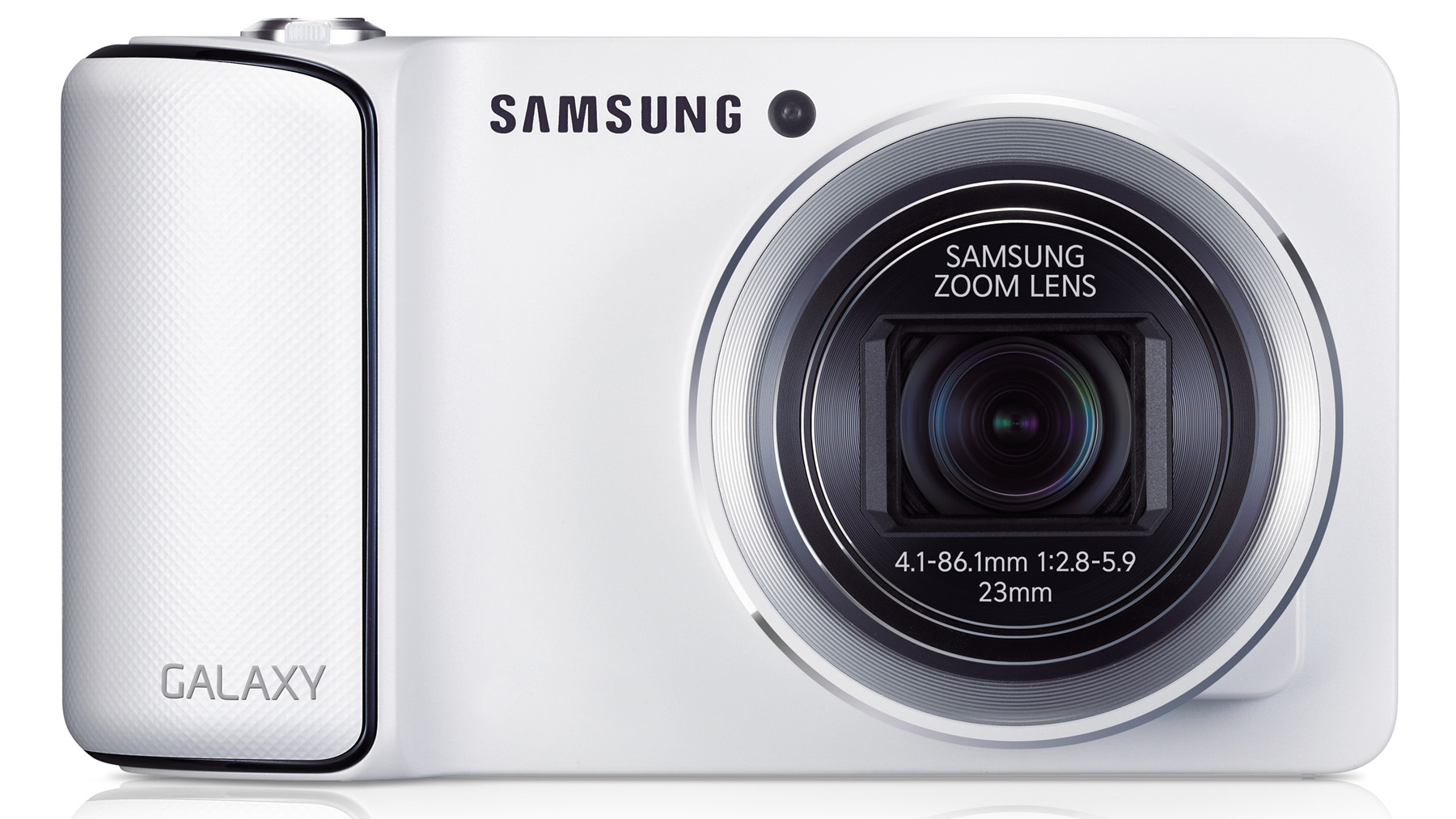Why you can trust TechRadar
With a 4.8-inch touch-sensitive screen on its back, the Samsung Galaxy Camera isn't the smallest compact camera in the world, and you are unlikely to want to try to stash it in your jeans' pocket. It will slip into a jacket pocket or average-sized handbag, though.
A cover closes automatically over the lens to protect it from harm in transit, but you may want to keep your keys away from that screen.
There's little in the way of physical controls on the camera, since most operations are carried out via the touchscreen, which is very responsive. On the top, however, there is a shutter release button surrounded by the zoom control and the power button, as well as a pop-up flash. That's it, and as a result the Samsung Galaxy Camera has a very clean look.
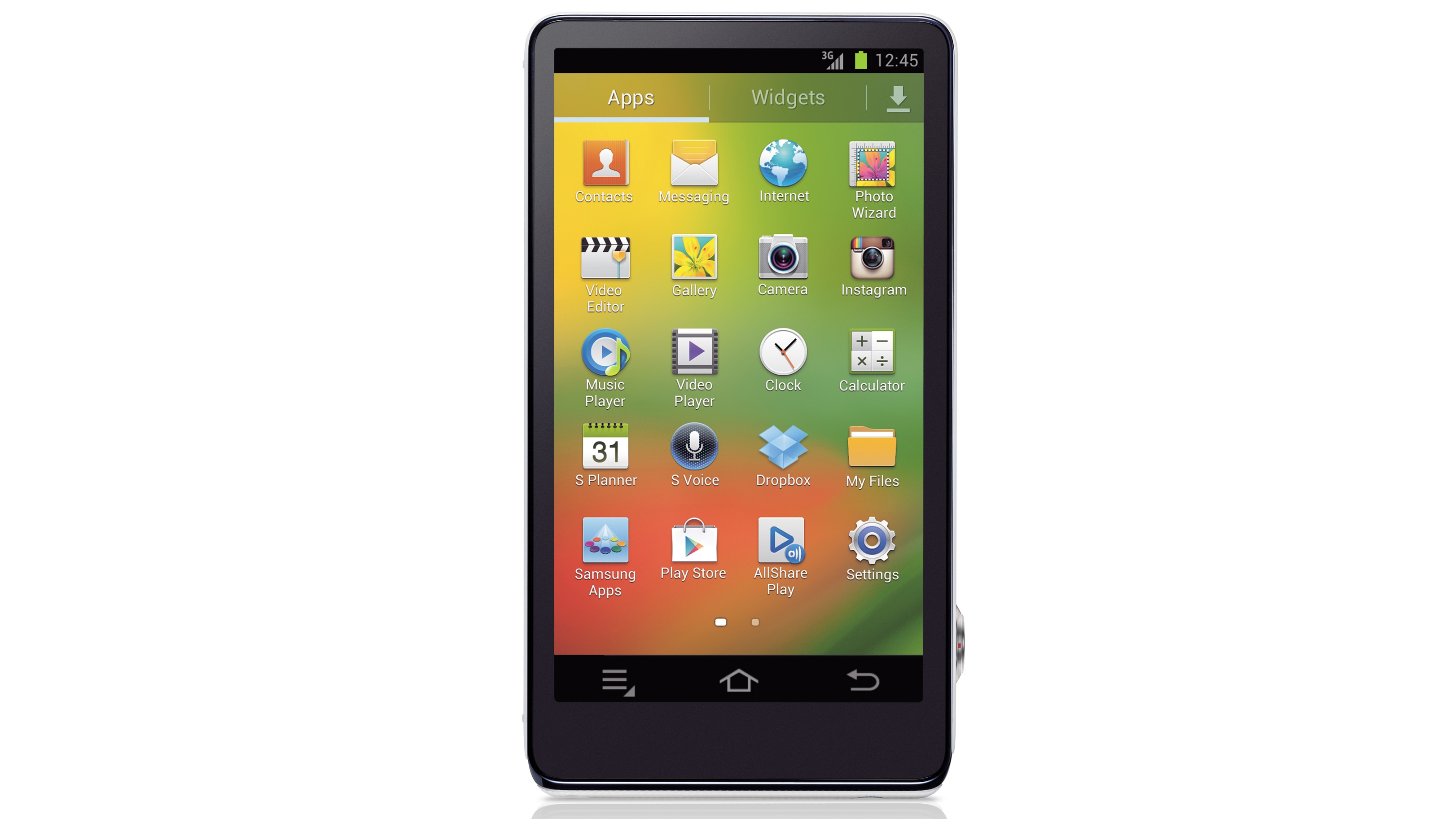
Those who fear that relying on a screen to make settings adjustments and selections will mean scrolling through endless menu options can relax - Samsung has done an excellent job with the interface, and we got to grips with it very quickly.
The company has had plenty of UI design practice with its other Galaxy products, such as the Samsung Galaxy S3 and Samsung Galaxy Note 2 smartphones and Samsung Galaxy Tab 2 10.1 tablet.
If necessary, the camera part of the Samsung Galaxy Camera can be activated by touching the camera icon on the screen. Once this is done, the mode icon gives access to the exposure modes, while the camera and video icons above and below trigger still or video capture.
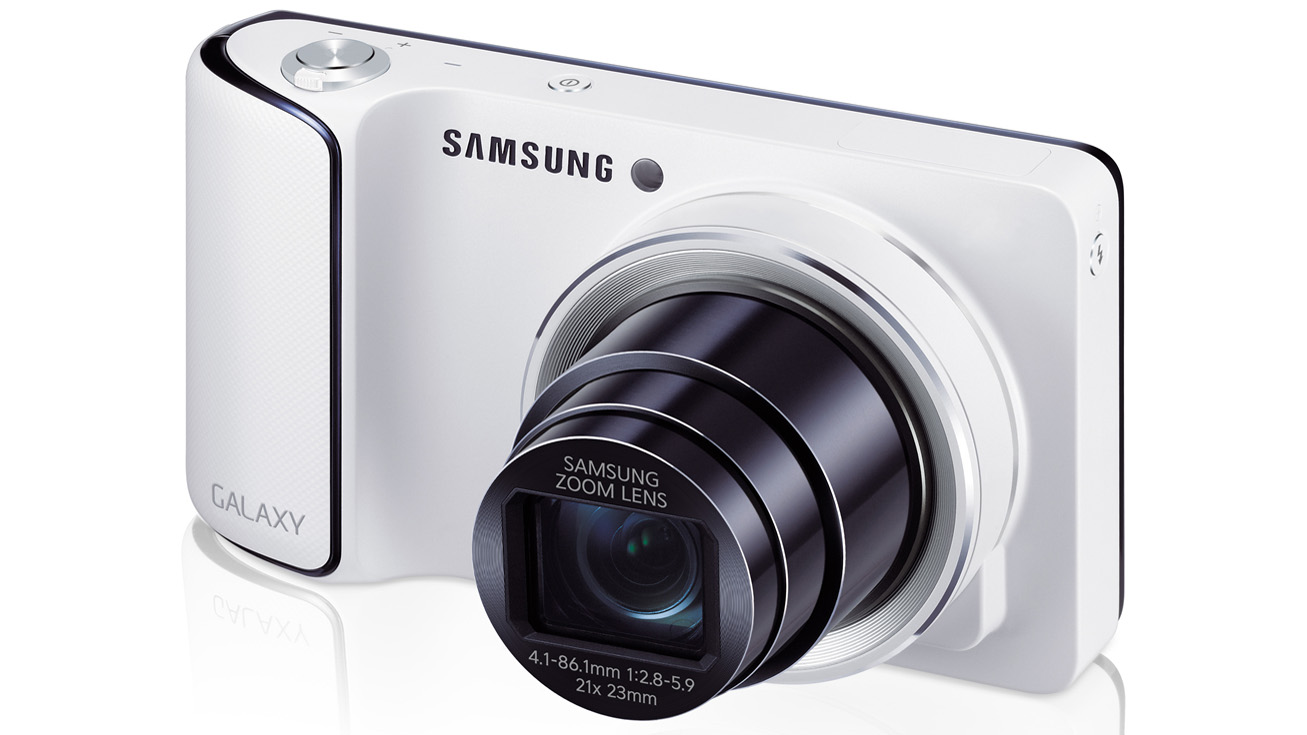
Tapping the mode button brings up three options, Auto, Smart and Expert. Auto speaks for itself, Smart gives access to 15 scene modes while Expert provides the route to aperture priority, shutter priority and manual as well as additional video mode which gives control over exposure compensation.
Once one of the expert stills options is selected, a neat graphic of a lens with a series of rings appears on the screen and the sensitivity (ISO), exposure compensation, aperture and shutter speed are adjusted by 'rotating' the virtual rings with a flick of a finger.
This graphic disappears after a few seconds, but if you need to make any further changes to the exposure, just tap the exposure setting figures at the top of the screen.
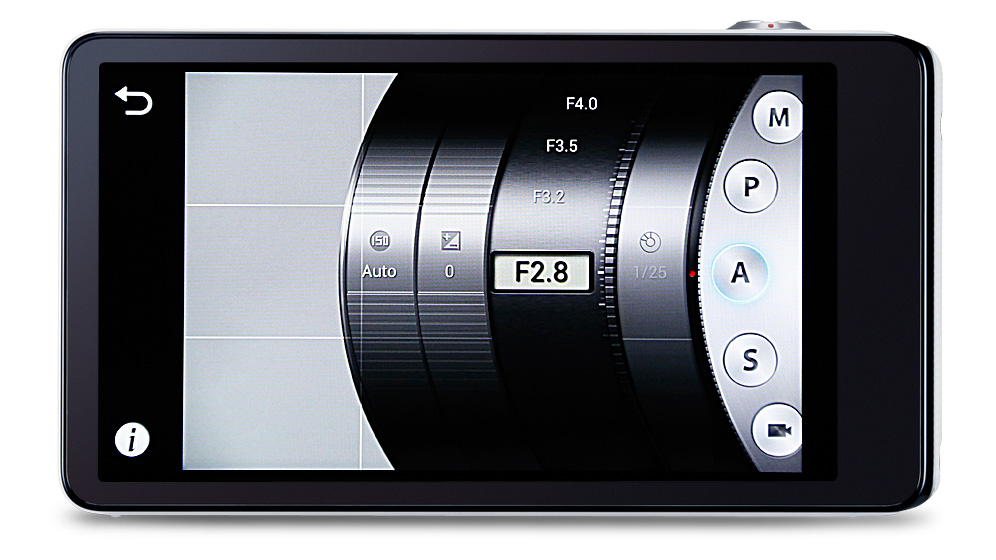
Touching the arrow at the bottom of the screen enables you to select one of 14 effects to apply. These include the usual black and white, sepia and retro modes, along with a few - such as Comic and Gothic noir - that are less common in the camera market.
A cog icon at the top-left of the screen gives a route to a settings menu where you can select aspects such as the white balance, flash, drive and focus mode. There are also image sharing and more general camera settings options such as screen brightness and GPS tagging.
It would be nice to have a quicker route to the focus mode, since you're likely to need the macro option on a frequent basis.
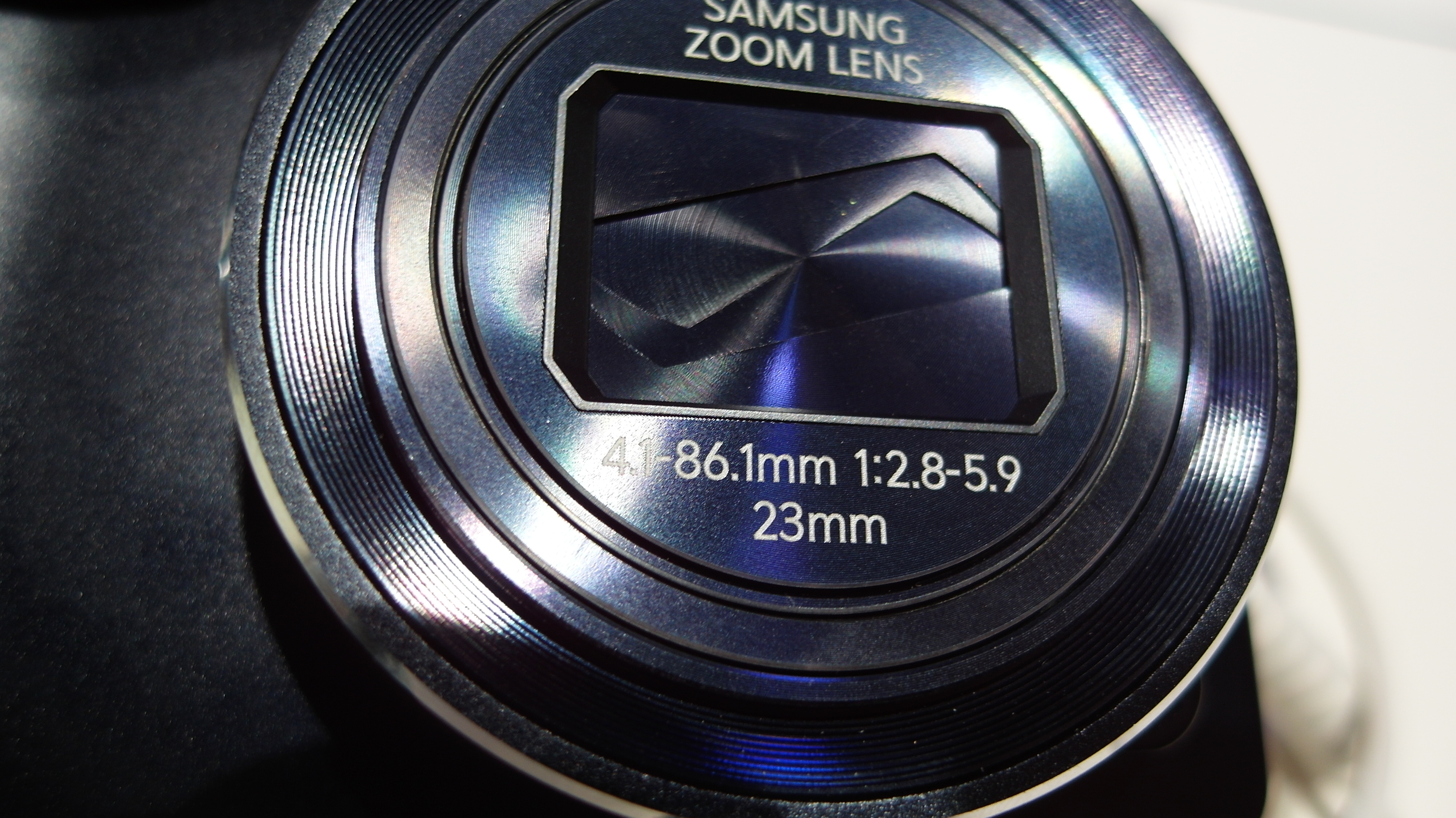
A Voice Control mode, as the name suggests, enables you to control the camera with your voice. It's possible to zoom in and out or take a shot with a voice command.
This sounds like a really useful option for self-portraits, but because the Samsung Galaxy Camera's screen is fixed, there will be a little bit of guesswork involved with the composition - although you can use the remote viewfinder app on another smart app to compose the image.
We found the Zoom command a bit hit and miss, but the camera usually took a shot when told to, only struggling in noisy surroundings.
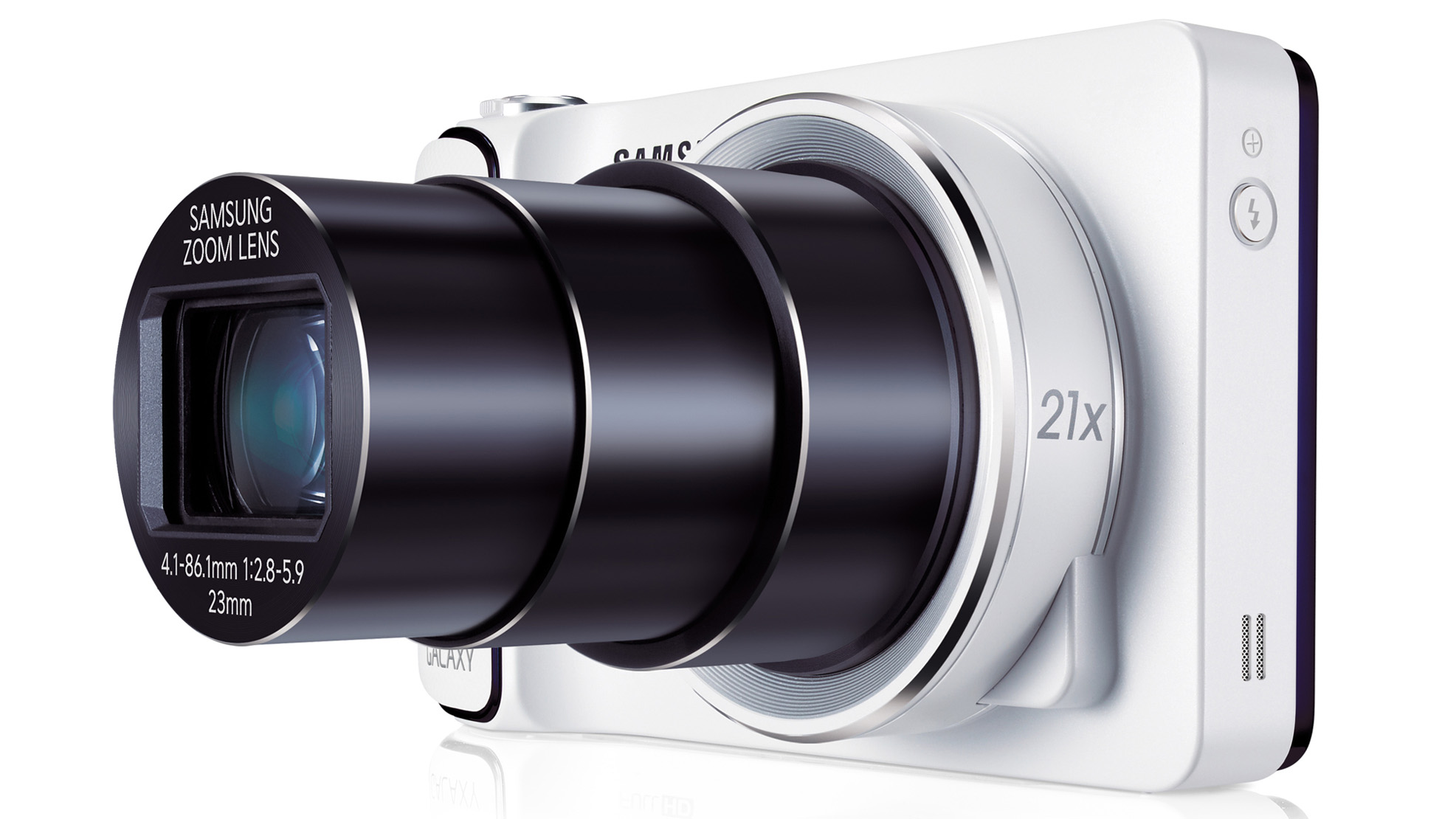
After the images have been captured, the Samsung Galaxy Camera's Gallery displays them in searchable folders based on time and location, and you can also create your own albums.
As you might expect, images can be selected for viewing with a tap of the screen, and scrolled through with a swipe or two of the finger - just as you would with a smartphone such as the Samsung Galaxy Camera's cousin, the Samsung Galaxy S3.
In the Photo Wizard app, there are controls to make simple adjustments to images, such as rotating and cropping, as well as making colour and brightness edits using on-screen sliding controls.
Images can also be shared in a number of ways, including via Dropbox, email, Facebook, Twitter, Google+ and Bluetooth, to name just a few options.
